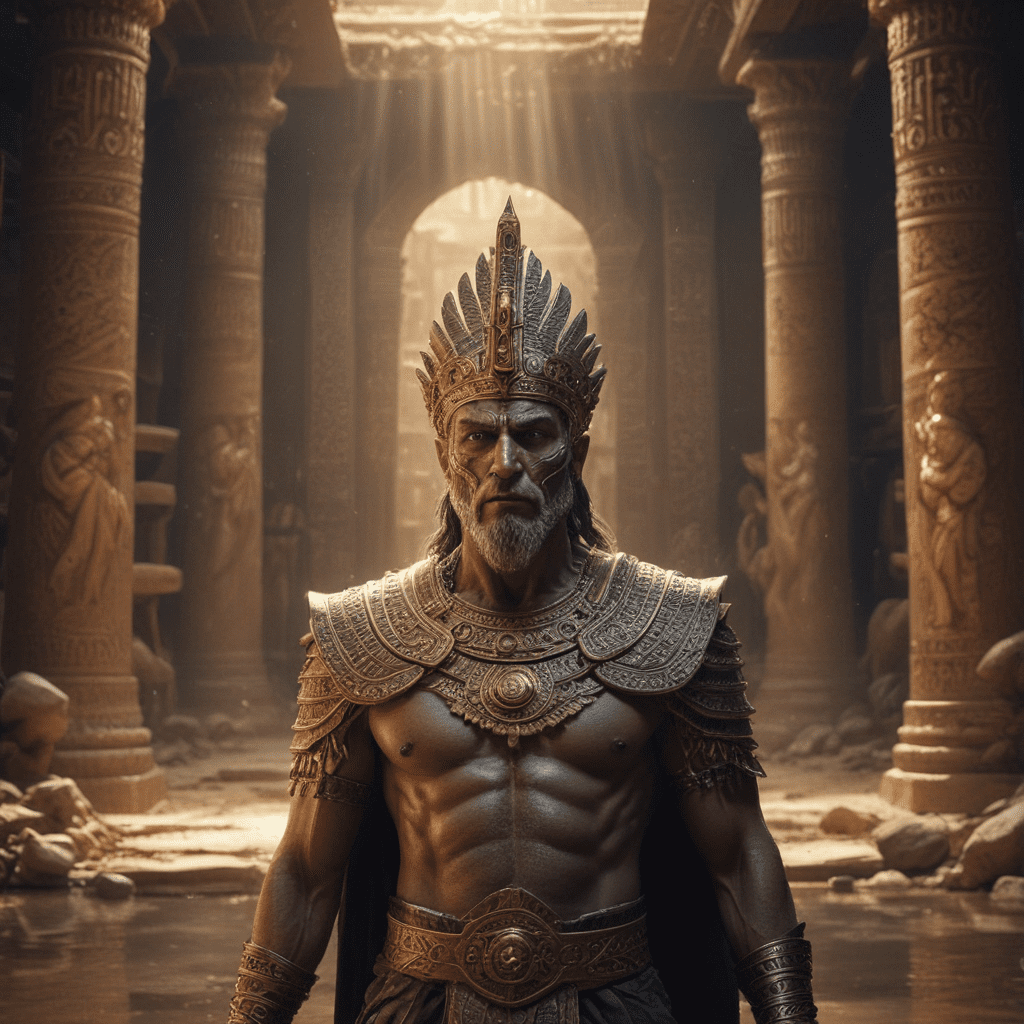The Great Flood: Myths That Challenge Our Understanding of History
Introduction to the Great Flood
The concept of a Great Flood is a pervasive motif found in numerous cultures across the globe. Often viewed as a cataclysmic event, the Great Flood serves as a powerful symbol of divine retribution, cleansing, and renewal. This article delves into various cultural interpretations of the Great Flood, examines the historical context behind these narratives, and explores how they shape our understanding of human nature and history.
Readers can expect a comprehensive overview of flood myths, an analysis of specific narratives, and an exploration of their significance in the context of geology and archaeology.
The Great Flood in Different Cultures
Flood myths are not exclusive to any one civilization; rather, they span a multitude of cultures, each with its unique interpretation and details. Here are some notable examples:
- Mesopotamian Mythology: The Epic of Gilgamesh features a flood story that predates the biblical account of Noah, emphasizing the themes of divine anger and human mortality.
- Hindu Tradition: In Hindu mythology, the story of Manu describes how he was warned of an impending flood by a fish, which was the incarnation of the god Vishnu, and built a boat to save himself and the seeds of all living things.
- Greek Mythology: The tale of Deucalion and Pyrrha recounts how they survived a great flood sent by Zeus to cleanse the world of its wickedness, paralleling the themes of rebirth and moral rectitude.
Despite the differences in narrative details, common themes such as survival, divine intervention, and the cleansing of humanity emerge across these myths.
Historical Context of Flood Myths
Examining the historical context of these flood narratives reveals a fascinating interplay between natural disasters and human storytelling. Geological and archaeological evidence suggests that ancient civilizations experienced significant flooding events, which may have inspired their myths.
Some contributing factors include:
- Climate Change: Changes in climate can lead to increased rainfall and melting glaciers, resulting in catastrophic flooding.
- Natural Disasters: Earthquakes, tsunamis, and other natural disasters can cause sudden flooding, leaving a lasting impact on affected populations.
These events likely played a role in shaping the narratives that cultures passed down through generations.
The Epic of Gilgamesh: A Case Study
The flood story in the Epic of Gilgamesh is one of the earliest recorded narratives of a great flood. In this epic, the character Utnapishtim is forewarned by the god Ea about an impending flood meant to destroy humankind. Utnapishtim builds a large boat, saves his family, and preserves the world’s animals.
This narrative has profound implications for later flood accounts, particularly the biblical story of Noah. Both stories share key elements:
- Divine warning about the flood
- Construction of a vessel to save a select group of beings
- The sending of birds to find land after the floodwaters recede
The similarities indicate a shared cultural memory of a significant flood event, which was adapted and reinterpreted over time.
The Biblical Account of Noah’s Ark
The story of Noah’s Ark, found in the Book of Genesis, is one of the most famous flood narratives. God, displeased with human wickedness, decides to cleanse the earth with a flood. Noah is chosen to survive due to his righteousness, and he builds an ark to save his family and pairs of every animal.
Some theological implications of this narrative include:
- The concept of divine judgment and mercy
- The importance of obedience and faith
- The idea of covenant between God and humanity
While there are similarities with other flood myths, the Noah story emphasizes themes of redemption and the possibility of a new beginning after destruction.
Scientific Perspectives on Global Flood Events
Scientific research provides valuable insights into the potential historical basis for these flood myths. Geologists and archaeologists have identified evidence of significant flood events in various regions:
- The Black Sea Flood: This event, occurring around 5600 BCE, may have inspired flood narratives in the Near East.
- The Mesopotamian Floodplain: Frequent flooding of the Tigris and Euphrates rivers could have contributed to the development of flood myths in the region.
Additionally, paleoclimatology studies the climate conditions that may have led to these catastrophic events, providing context for the myths that arose in their aftermath.
The Role of Oral Tradition in Preserving Flood Myths
Oral tradition plays a crucial role in preserving cultural narratives, including those of the Great Flood. These stories are passed down through generations, often evolving in the process. Oral storytelling serves several functions:
- Education: Flood myths often carry moral lessons about human behavior and the consequences of actions.
- Community Identity: Shared myths strengthen cultural identity and community bonds.
- Historical Record: Oral traditions can serve as historical accounts of past events, even if embellished over time.
As these stories are retold, they reflect the values and beliefs of the societies that share them.
Modern Interpretations and Misinterpretations
In contemporary society, ancient flood myths are often viewed through a lens of skepticism or sensationalism. Popular culture, including films, books, and television shows, frequently dramatizes these narratives, sometimes distorting their original meanings.
Modern interpretations can lead to:
- Misunderstandings of Historical Context: Simplistic views may overlook the complex interplay between myth and historical events.
- Reductionist Views: Focusing solely on scientific explanations may dismiss the cultural significance of these myths.
It is essential to approach these stories with an understanding of their historical and cultural context to fully appreciate their depth and meaning.
Lessons from Flood Myths in Understanding Human Nature
Flood myths reveal much about humanity’s relationship with nature. They echo our fears of natural disasters and our desire for survival. Common themes include:
- Survival: The struggle against overwhelming odds and the instinct to persevere.
- Morality: Questions of right and wrong that arise in the face of disaster.
- Divine Justice: The belief that higher powers intervene in human affairs, often as a response to moral failings.
Through these narratives, cultures articulate their values and beliefs about existence, morality, and the natural world.
Conclusion: Bridging Myth and History
Studying the Great Flood myths offers valuable insights into the historical events that shaped human civilization. These narratives are not mere stories; they are reflections of humanity’s experience with nature, morality, and the divine. Understanding these myths encourages a deeper appreciation of how cultures interpret their histories and experiences.
As we move forward, further research into these narratives can illuminate the connections between myth and history, enriching our understanding of human nature and the world around us.


